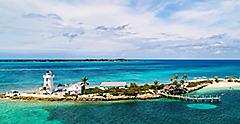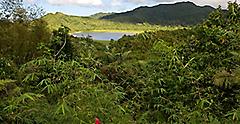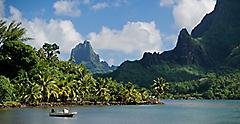
A Brief History Of The Modern Vacation
T he modern vacation got its start after the Civil War. In 1869, a preacher from Boston named William H.H. Murray published one of the first guidebooks, titled "Adventures in the Wilderness," after visiting the 9,000-square-foot expanse of lakes, forests and rivers in the Adirondack Mountains in upstate New York. Because of the setting of the book, he suggests hikes, canoe trips, fishing trips and other outdoor activities as ways to relax. While the idea of vacationing was new to the United States, it had gained notable traction in Europe during the Romantic Age in the 18th century.
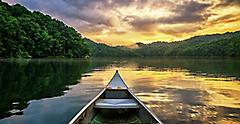
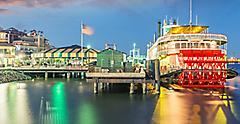
Post-Gilded Age Travel

At the beginning of the 20th century, vacations began to resemble the trips we take today. Car ownership was on the rise in the middle class, which meant even more access to other regions of America and the ability to stay for a shorter amount of time. Seeing faraway places became more convenient. Developers were catching on, building roadside camps, cabins and hotels, and small towns built attractions for travelers to stop at along the way.
In 1914, the first passenger plane took off and 25 years later in 1939, the first transatlantic passenger plane took off, traveling from New York City to Marseille, France. After those milestones, vacations began to grow in popularity and the number of travel destinations increased. Americans were no longer confined to the slow pace of car travel thanks to air and steamboat travel, which opened up the possibility of traveling to Mediterranean destinations like Corsica, Palma, Sardinia and of course the Costa Brava.
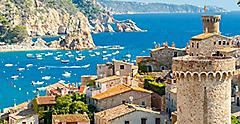
Great Vacations In The US
Today, Americans have nothing holding them back from exploring the shores of unknown countries, but lately, many have been exploring their own backyard, choosing to stay in the United States. One of the popular spots among Americans when vacations were growing in popularity was Atlantic City, mainly because of its famous boardwalk. In the summer of 1910, the shores of Atlantic City in New Jersey had three million visitors. Today, it's still among the great vacations in the U.S. for families.
On the other side of the country, the rise of automobile ownership led to the California coastline becoming a popular destination. Its warmth and sunshine in the colder months drew families to pack up their cars and head out to explore. In 1919, that exploration became much easier with the construction of Highway One, which stretches from Baja to the tip of the Olympic Peninsula. Highway One is a historian's and tourist's dream. It allows travelers to see some of the most popular spots in the entire state, including San Luis Obispo, Carmel-by-the-Sea, Pebble Beach and, of course, Big Sur.

Lincoln Highway (dating from 1923) and Route 66 (originating in 1926) are the bread and butter of cross-country road trips. These were two of the first cross-country roads connecting the east and west, which further allowed for exploration of the United States. Before the Lincoln Highway, there was no formal road connecting the eastern and western states of America.
In addition to California, places like Niagara Falls, Yellowstone National Park and the Grand Canyon began to become more popular with American vacationers. Today, these are still popular vacation spots among families in addition to Washington D.C., Yosemite, and San Diego.
The Rise Of The Suntan
The suntan symbolized wealth and the ability to travel to warmer climates during the colder months. The Bahamas, Jamaica, Barbados and other islands in the Caribbean gained popularity as vacation destinations and became some of the earliest vacation spots in the Caribbean.
Christopher Columbus was the first to discover the islands, which he referred to as "baja mar" (shallow sea). We now know these islands as the Bahamas. The Hotel and Steam Ship Service Act of 1898 provided government support for the construction of hotels and subsidized steamship service, which allowed the islands to welcome more tourists. These visitors come to enjoy the archipelago's 100,000 square miles of ocean, 700 stunning islands, over 2,000 rocks and cays and beautifully clear water.
Hispaniola (known today as the Dominican Republic and Haiti), Trinidad, the Virgin Islands, Cuba and Puerto Rico were also discovered and claimed by the Spanish Crown and now welcome visitors who arrive by plane or cruise ship.
Travel Today
Today, travel knows no limits because of air and cruise travel. The Mexican Riviera is one of the most popular destinations for Americans to visit in the Caribbean, and in 2017, 35.1 million Americans visited Mexico, with Cancun receiving the most visitors. Mexico is beloved by many because of its proximity to the U.S. as well as its beaches and fantastic weather year-round.
Thanks to its diverse landscape, tourists in Mexico can visit volcanoes, jungles, deserts and idyllic beaches. Head to Mexico's museums to see the historic works of Frida Kahlo and artworks excavated from the Maya civilization. You can also visit ruins of ancient temples like Chichen Itza and Tulum.
Cenotes are another must-see. Tours will take you through these underground caverns, where you'll swim in turquoise waters. Then you can walk through rainforests while spotting exotic wildlife like iguanas and macaws. If you're on the coast, you can swim and snorkel in the crystal-clear waters and spot schools of tropical fish. In cities like Puebla, Cancun and Mexico City, the colonial architecture is a must-see as well as the bustling parks and vibrant markets.
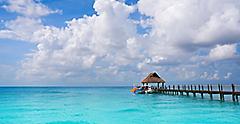
International Travel
Americans are able to see so much of the world thanks to airplanes. Airplanes cut down on travel time, making far-off destinations more accessible. The top five international destinations besides Mexico and Canada are the United Kingdom, Dominican Republic, France, Italy and Germany. Modern-day travel allows travelers to experience medieval architecture, modern skyscrapers, ancient ruins, authentic cuisine and untouched nature.
Whether you want to travel to the shores of Australia, walk the streets of ancient European cities, see the West Coast of the United States or head to the Bahamas, consider a cruise for your next vacation.
Get Royal Deals, Sign Up Today

Getting There
Explore Our Most Affordable Itineraries
Whether you want to travel to Australia, walk the streets of ancient European cities or head to the Bahamas, consider a cruise for your next vacation.



